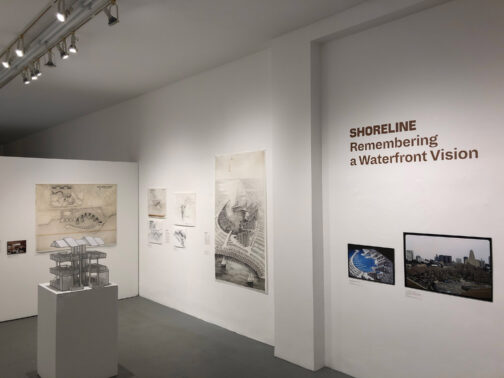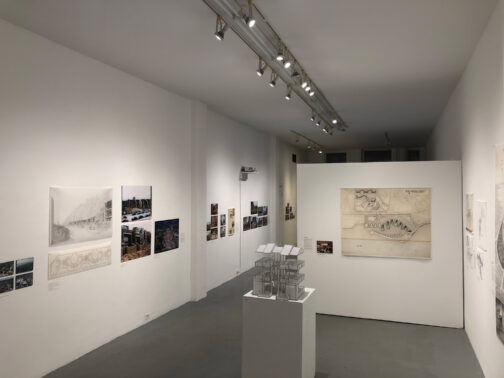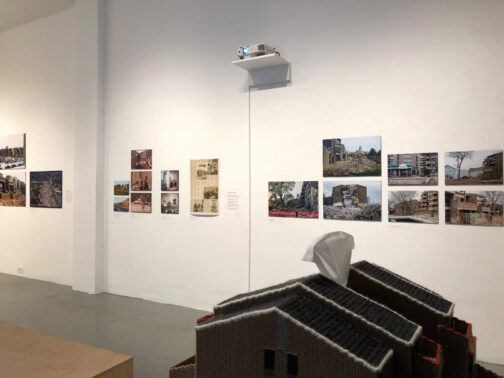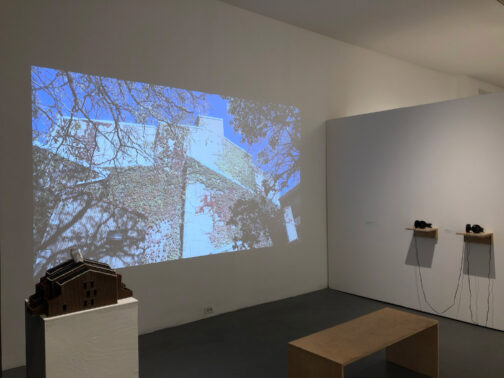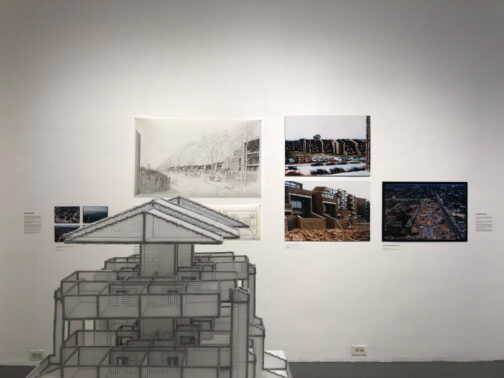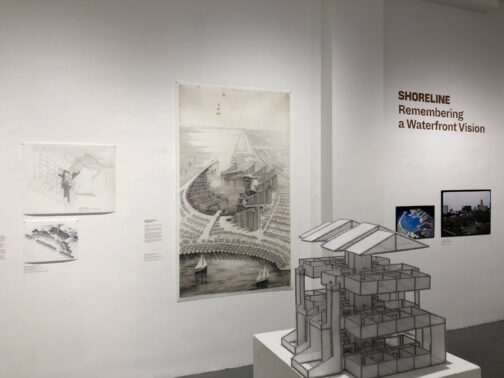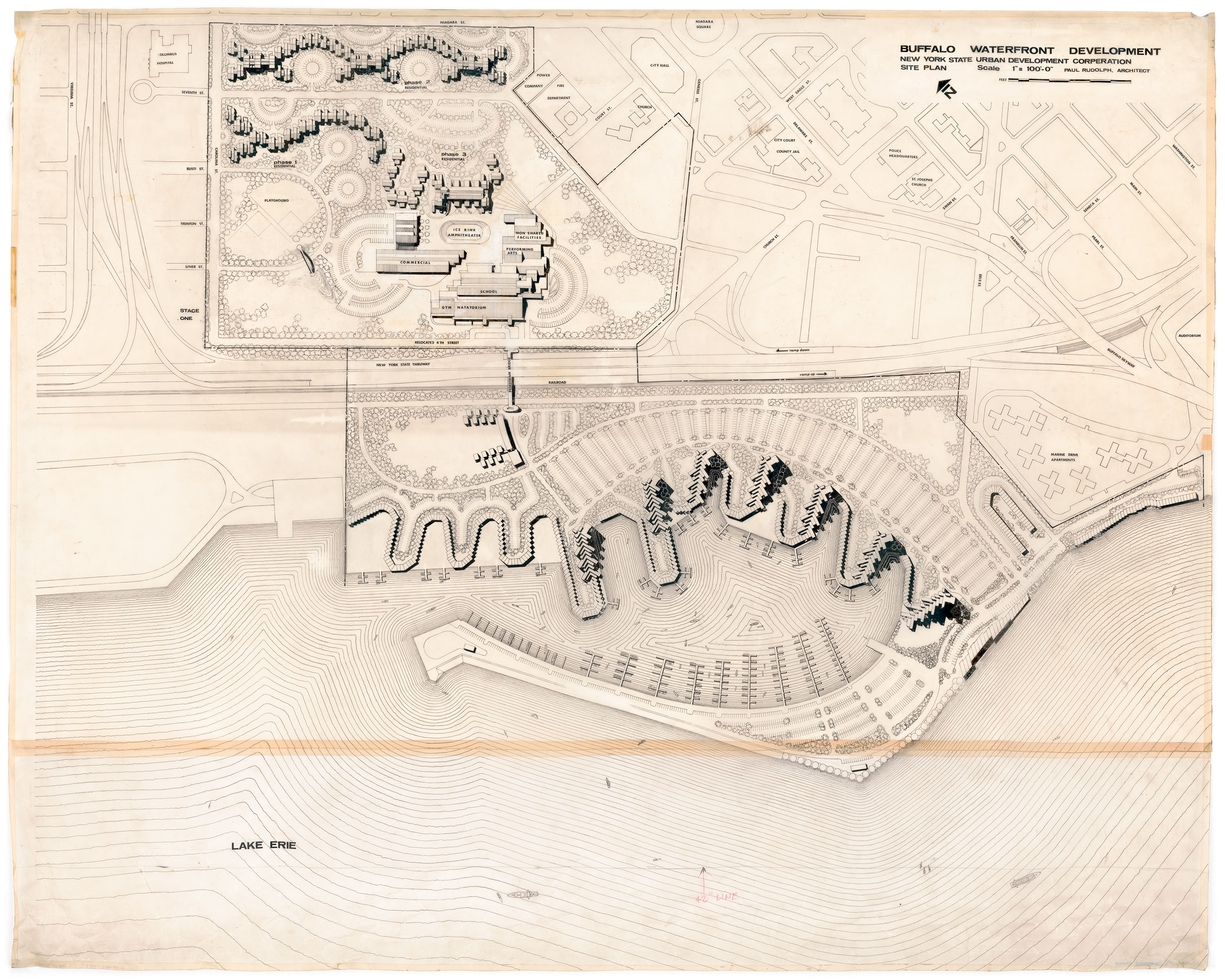
Buffalo Waterfront Development site plan, 1972, prepared for the New York State Urban Development Corporation by Paul Rudolph, Architect.
Drawing from the Paul Marvin Rudolph archive, Prints & Photographs Division, Library of Congress.
© The Estate of Paul Rudolph, The Paul Rudolph Heritage Foundation.
Located steps from City Hall in Buffalo’s Lower West Side, the Shoreline Apartments is a housing complex designed by architect Paul Rudolph and completed in 1974. Featuring shed roofs, ribbed concrete exteriors, projecting balconies, and enclosed garden courts, the project combined Rudolph’s spatial radicalism with experiments in human-scaled high-density housing. It was originally part of the Buffalo Waterfront Development, an ambitious, mixed-income urban renewal project commissioned by the New York State Urban Development Corporation in 1969. Rudolph’s scheme featured an arrangement of monumental, terraced high-rises flanking a marina, a sprawling school and community center, and a series of slinking low- and mid-rise apartment buildings meant to evoke Italian mountain villages, with green spaces woven through the site.
In the end, only two phases of affordable housing (Shoreline and Pine Harbor Apartments) were built. Today they are among the most hated buildings in Buffalo. Like many public housing contemporaries, their inventive, complex forms and admirable social aspirations have been overshadowed by disrepair, crime, and vacancy. Norstar Development, the site’s owner, in 2013 proposed a phased demolition and replacement of Shoreline with new Victorian-style townhouses. Following failed attempts at landmarking the structures for preservation, the first round of demolitions began in summer 2015. In 2017, Norstar accelerated the demolition schedule, asking remaining residents to leave, and in January 2018, the last holdout was vacated from his unit.
Shoreline: Remembering a Waterfront Vision is an exhibition of drawings, photographs, documents, and artworks, spanning from the original vision of the Buffalo Waterfront Development in the 1960s to the eventual destruction of Shoreline in recent years. The exhibition materials, drawn from archival sources as well as artistic responses, trace the erosion of an architectural, urban, and social vision for Buffalo’s waterfront, one that was only ever partially realized.
Considering the Shoreline within this context, the exhibition looks at the architectural style of Brutalism, the complicated history of urban renewal, and the past attempts by government to play a leading role in developing cities and providing social housing on a mass scale. Amidst Buffalo’s so-called renaissance, when its historical assets are being reevaluated, preserved, and restored, why are we racing to forget the Shoreline?
Installation views
Credits
Shoreline: Remembering a Waterfront Vision is curated by Bryan Lee and Barbara Campagna, and presented in partnership with the Paul Rudolph Heritage Foundation. Contributors include Avye Alexandres, David Torke, Kurt Treeby, and Rima Yamazaki. Special thanks to Kelvin Dickinson and Mark Byrnes.
This exhibition is funded by the New York State Council on the Arts with the support of Governor Andrew M. Cuomo and the New York State Legislature, and the Graham Foundation for Advanced Studies in the Fine Arts.

![]()

